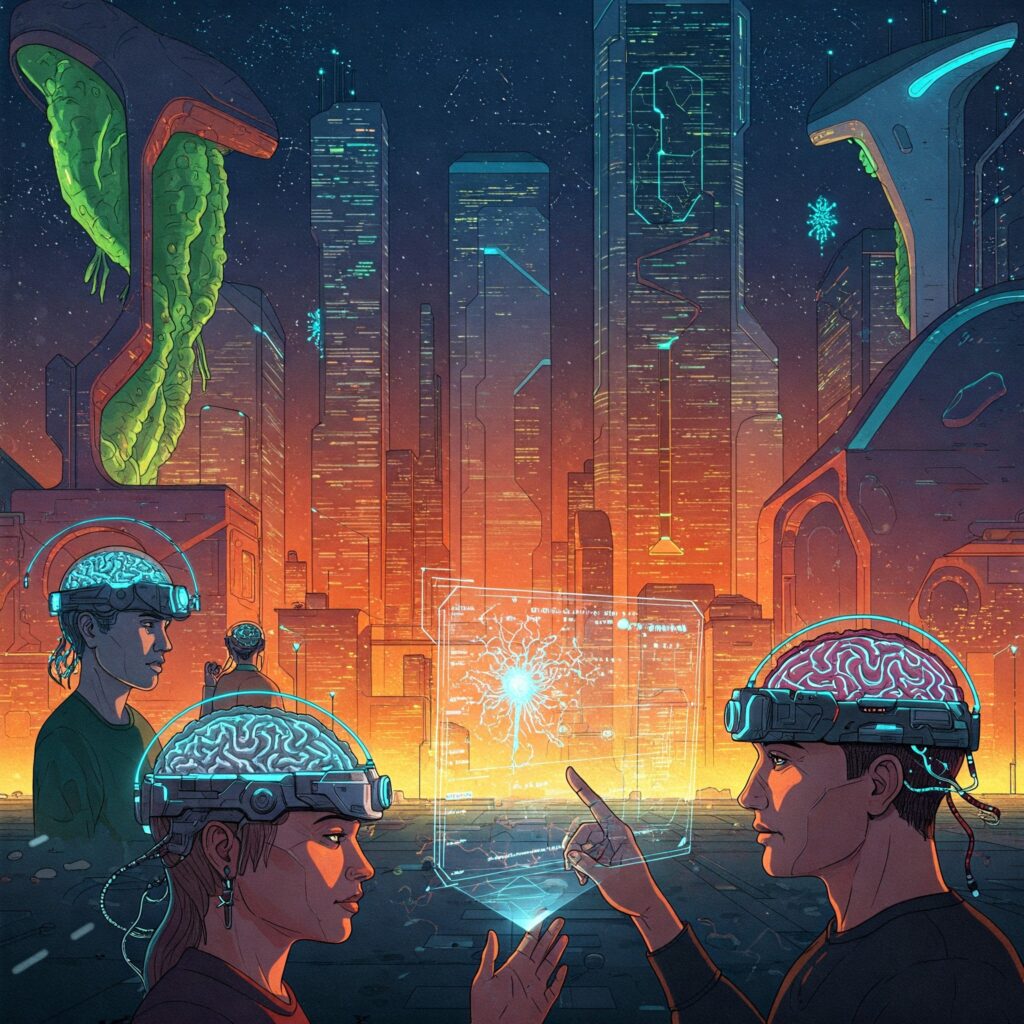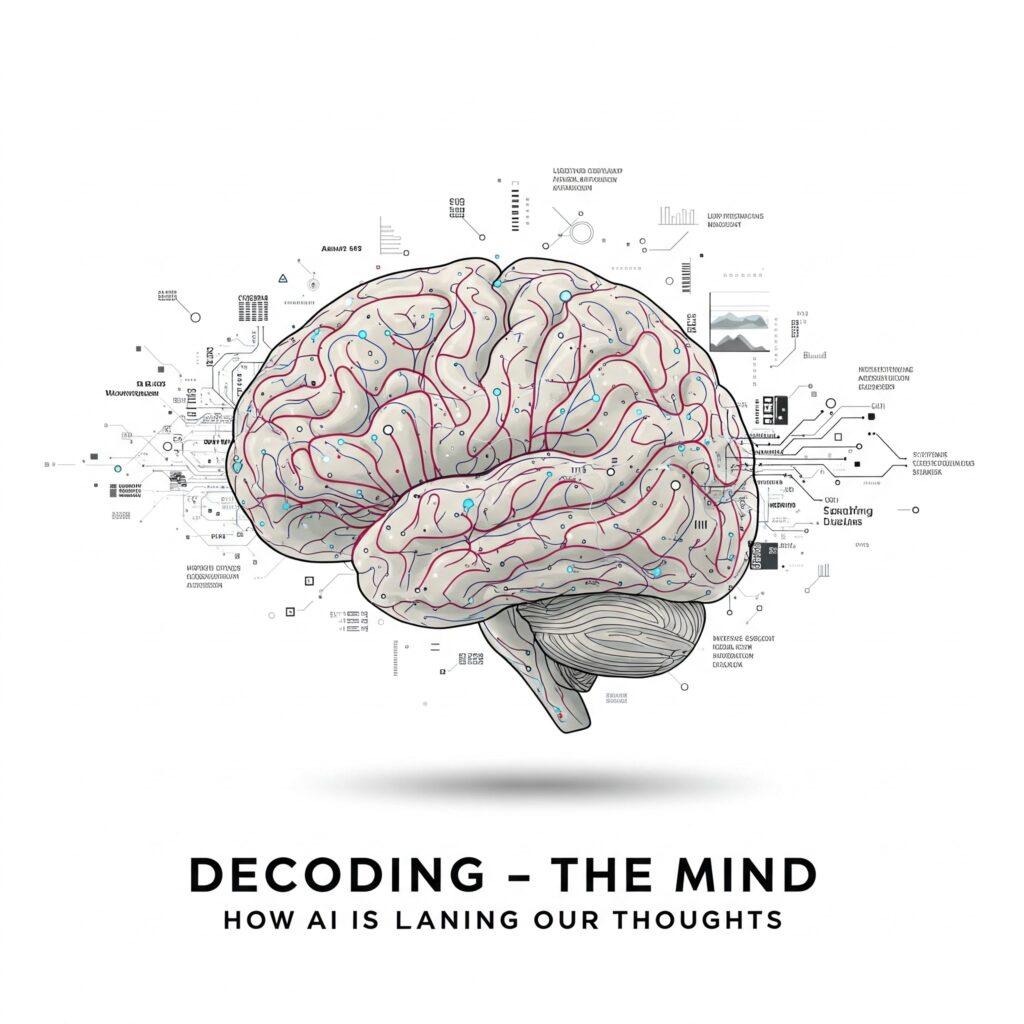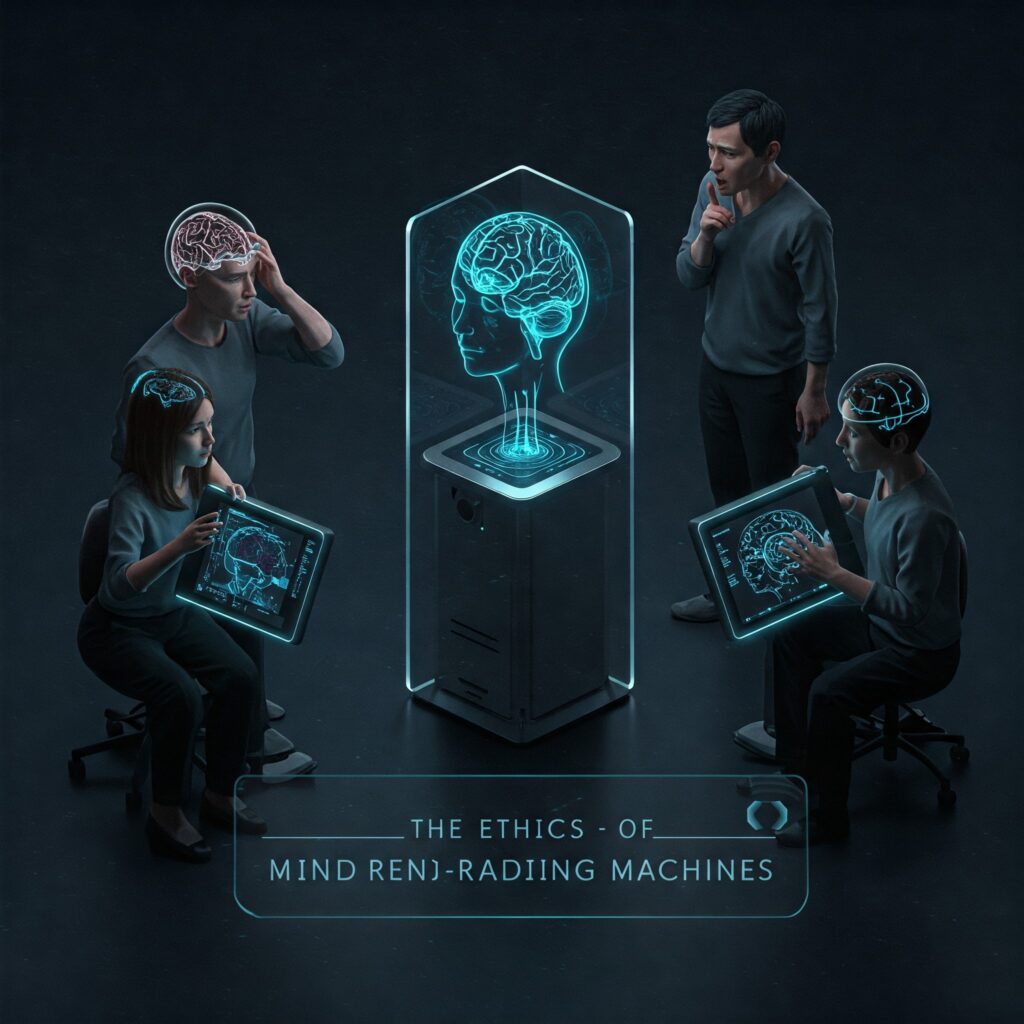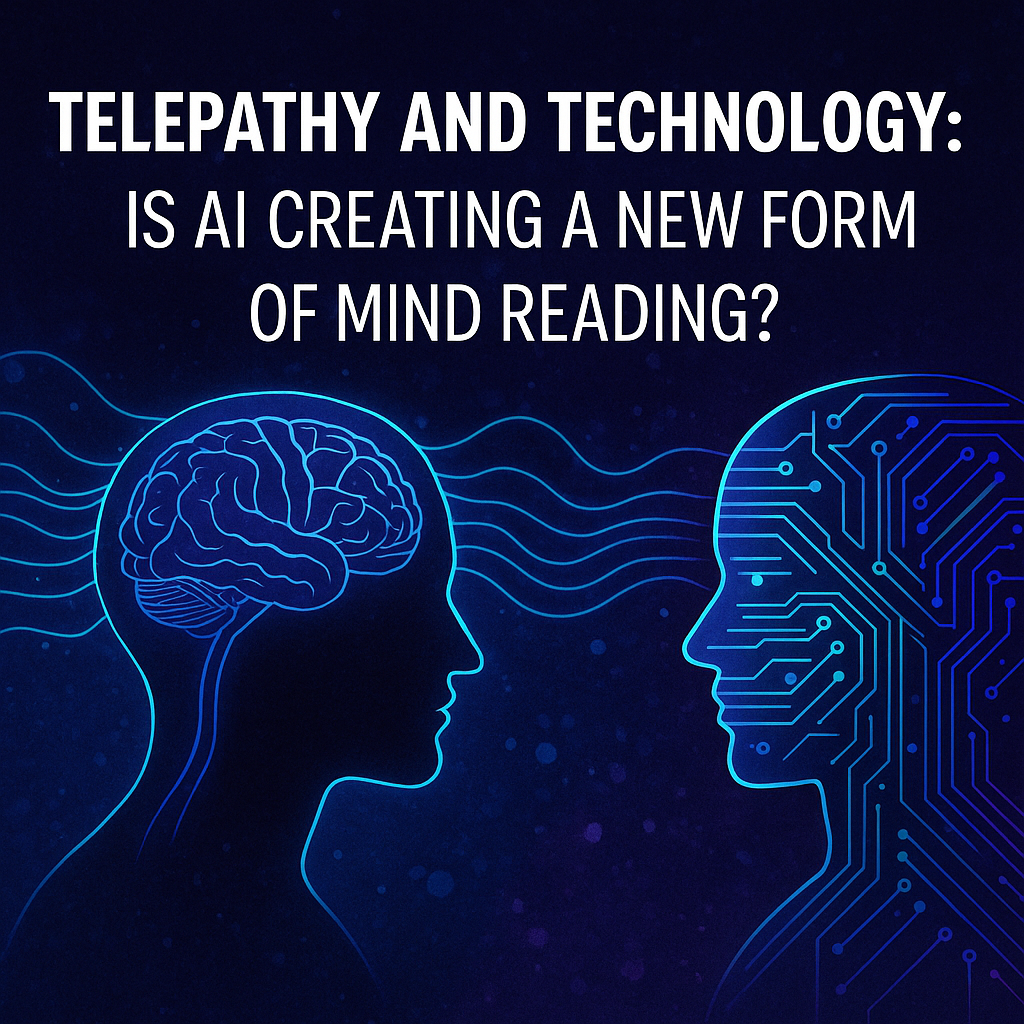Imagine a world where your thoughts are no longer private.
Where a machine can detect what you’re thinking… before you even speak a word.
It sounds like science fiction. Yet today, thanks to the explosive growth of artificial intelligence and neuroscience, this futuristic idea is inching closer to reality.
AI-powered mind-reading technologies are emerging faster than anyone expected. And the consequences — for science, consciousness, ethics, and human freedom — are profound.
The question is: are we ready?
The Rise of Brain-Computer Interfaces
It all started quietly.
For decades, scientists have been working on brain-computer interfaces (BCIs). These are devices that can translate brain activity into digital signals. Early versions were simple. They helped people with paralysis control robotic limbs or type using only their thoughts.

But recent breakthroughs have taken BCIs to a whole new level.
Thanks to machine learning — a type of AI that learns from patterns — researchers can now decode increasingly complex thoughts and even partial speech directly from brain waves.
In 2023, a study from the University of Texas made headlines when researchers used AI models to reconstruct words and phrases from brain scans. Participants simply listened to stories, and AI decoded the brain’s electrical activity to predict what they were hearing.
The accuracy was shocking.
And it raised a bigger question: if we can decode what people hear… can we eventually decode what they think?
Decoding the Mind: How AI Is Learning Our Thoughts
To understand how AI “reads” the mind, we need to look at how the brain processes information.

Every thought, image, memory, and word creates specific patterns of electrical activity in the brain. These patterns — captured through technologies like fMRI or EEG — are complex and messy. No two brains are exactly alike.
But this is where AI shines.
Machine learning algorithms excel at finding patterns hidden in chaos. By training on massive amounts of brain data, AI can learn to associate certain brain signals with specific meanings. Over time, the system becomes better at predicting thoughts based on raw brain activity.
At first, researchers focused on simple categories: is the person thinking about a face or a house? Then it evolved: is the person recalling a happy memory or a sad one? Now, AI models are starting to predict entire sentences, emotional states, and even intentions.
It’s not perfect yet. But every month, the technology gets a little better.
Beyond Medicine: The New Frontier of Telepathic AI
Originally, mind-reading technology was aimed at helping those with disabilities.

But as decoding thoughts becomes more sophisticated, commercial and governmental interest is exploding.
Tech companies are investing billions into brain-interface research. Some dream of creating telepathic communication devices — tools that would allow people to send thoughts directly to each other without speaking or typing.
Imagine texting someone… with your mind.
Others envision immersive virtual realities where your brainwaves control the environment seamlessly.
Still others raise darker possibilities — like using AI to predict human behavior for marketing, law enforcement, or even surveillance.
The truth is, once machines can interpret your internal world, the boundary between private thought and public action begins to blur.
And this is where the debate heats up.
The Ethics of Mind-Reading Machines
If technology can access your thoughts, who owns that information?

You? The company? The government?
Ethicists warn that mind-reading AI could lead to unprecedented invasions of privacy. It’s one thing for companies to track your browsing habits. It’s another to track your unspoken feelings, desires, or fears.
Without strict protections, we could face a future where your inner life — the last truly private domain — becomes vulnerable to hacking, manipulation, or exploitation.
In 2023, the Chilean government became the first to propose a “NeuroRights” bill, designed to protect brain data as sacred and personal. Other countries are now following suit.
Still, the pace of technological change is faster than legal systems can adapt.
There’s also the question of accuracy. What if an AI incorrectly interprets a fleeting thought as a criminal intention? What happens to freedom when your mind is under surveillance?
These questions aren’t theoretical anymore. They’re becoming urgent.
Ancient Dreams, Modern Technology
What’s fascinating is that the idea of telepathy isn’t new.
For centuries, mystics, shamans, and spiritual teachers have spoken of the ability to communicate mind-to-mind. Ancient traditions describe a world where consciousness is interconnected, where thought travels faster than speech.
In some near-death experiences, people report communicating with other beings through pure thought — no words, no sound, just direct knowing.
Now, technology is trying to recreate what mystics once claimed was natural.
But are we replicating true telepathy? Or simply building a technological shadow of it?
True telepathy, in many traditions, is not just about sending information. It’s about deep connection — understanding the emotions, intentions, and soul of another being.
Current AI-based mind-reading may get close to the “what” of thought. But it remains far from the “why” and the deeper layers of meaning that human connection brings.
The Future of Mind and Machine
So where does this all lead?
On one hand, AI mind-reading could open incredible possibilities. Healing communication disorders. Expanding human creativity. Unlocking hidden aspects of consciousness.
On the other hand, it could become a tool of control and surveillance unlike anything history has seen.
The challenge ahead is not just technological. It’s spiritual.
We must decide how much of our inner world we are willing to share — and who we trust with it.
Because the power to read minds, even imperfectly, is the power to shape reality itself.
In the end, telepathy through technology may not be about machines learning our thoughts.
It may be about us remembering the sacredness of thought… and protecting it fiercely.
The future is being written right now — not just in laboratories, but in our choices about how we want to live, connect, and stay human in an age of machines.

